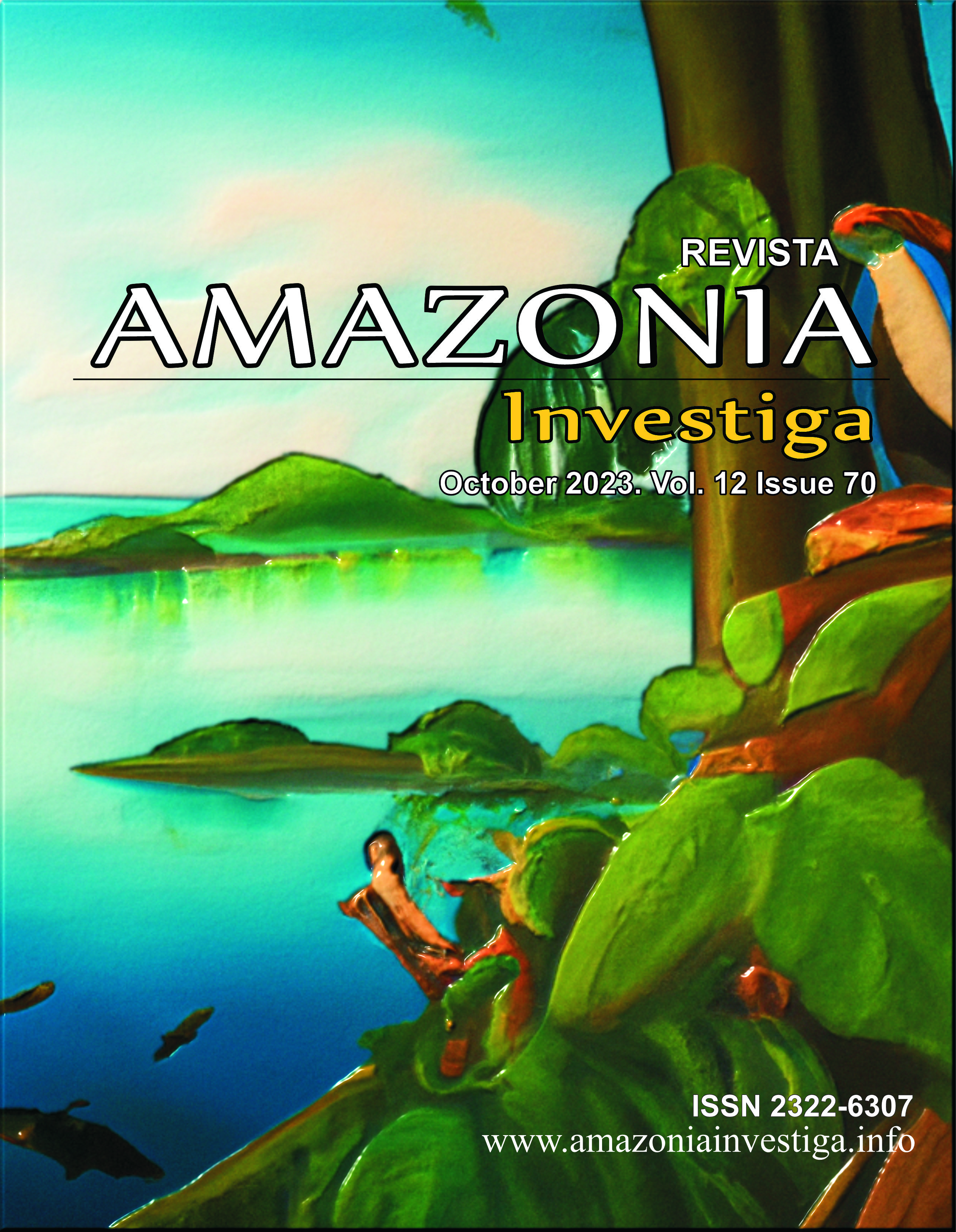Mind maps to boost the learning of English as L2 at higher education institutions in Ukraine
Publicado 2023-10-30
Palabras clave
- associative scheme, interactive tool, cognitive graphics, mind mapping, Ukrainian higher education institutions (HEI)
Cómo citar
Resumen
Mind mapping is a powerful tool for teaching English as a foreign language, particularly in the context of learning and mastering English as a second language (L2). Visualizing the content contributes to a more effective memorization and error-free reproduction, even after some time. In the Ukrainian pedagogy, the didactic potential of “cognitive graphics” and specific means of its implementation calls for deeper studies and systemic representation as the concept itself is a multi-disciplinary phenomenon on the intersection of neuro-/psycholinguistics, psychology, theory of language communication, cognitivism, and web-design. That is why the aim of this work is to ascertain the essence of mind mapping as powerful means of teaching and learning English, to show its relations with ICT in designing an effective set of academic tasks and stimulating the student’s digital competence. The innovative character benefits the perception, and thus, the interiorization of the course content, increases the academic performance of students and their confidence in their abilities providing internal motivation for further work. As a result, the student’s selfassessment receives additional clarity, communication in L2 gets extra motivation, critical analysis skills and soft skills develop better creating a sturdy foundation set of skills for a highly professional graduate from a Ukrainian university.
Descargas
Citas
AYOA. (2023a). Get Creative with Organic Mind Maps. Retrieved from: https://www.ayoa.com/organic-mindmapping/?gclid=EAlaIQobChMI9sOW4ceg5QIVU6maCh3 [In English]
AYOA. (2023b). What is an Organic Mind Map? Retrieved from: https://acortar.link/Ey8kpM [In English]
Bellou, J. (2009). Using Dynamic Visualizations to Enhance Learning in Physical Geography. Encyclopedia of information communication technology In A. Cartelli and M. Palma (eds.), 2(In–Z), (p. 795–808). New York: Hershey. https://doi.org/10.4018/978-1-59904-845-1.ch105 [in English]
Buzan, T. (1984). Use your head. London: BBC Books. ISBN 978-0563210825. [In English]
Buzan, T. (1986). Use Your Memory – Mega Brain Mind Memory. London: BBC Books. ISBN 978-0563204756. [In English]
Buzan, T. (2005). Mind Maps for Kids. An introduction. London: Thorsons. ISBN 978-0007743865. [In English]
Buzan, T., & Buzan, B. (1996). The Mind Map book: How to Use Radiant Thinking to Maximize Your Brain’s Untapped Potential. New York: Plume. ISBN 978-0452273221 [In English]
Carter C. L., & Hamilton H. J. (1995). A fast, on-line generalization algorithm for knowledge discovery. Applied Mathematics Letters, 8(2), 5–11. https://doi.org/10.1016/0893-9659(95)00002-8 [In English]
Celik, B., & Kara, S. (2022). Students' perceptions of the general english proficiency test: A study on Tishk International University students in Erbil, Iraq. Amazonia Investiga, 11(59), 10-20. https://doi.org/10.34069/AI/2022.59.11.1
Crapo, A. W., Waisel, L. B., Wallace, W. A., & Willemain, T. R. (2000). Visualization and the process of modeling: A cognitivetheoretic view. In Proceeding of the Sixth ACM SIGKDD International Conference on Knowledge Discovery and Data Mining (p. 218–226). https://doi.org/10.1145/347090.347129 [In English]
Eppler, M. J. (2006). A comparison between concept maps, mind maps, conceptual diagrams, and visual metaphors as complementary tools for knowledge construction and sharing. Information Visualization, 5(3), 202–210. https://doi.org/10.1057/palgrave.ivs.9500131 [In English]
Garner, K. G., & Dux, P. E. (2023). Knowledge generalization and the costs of multitasking. Nature Reviews Neuroscience, 24, 98–112. https://doi.org/10.1038/s41583-022-00653-x [In English]
Genesee, F. (2000). Brain Research: Implications for Second Language Learning. UC Berkeley: Center for Research on Education, Diversity and Excellence. Retrieved from https://escholarship.org/uc/item/58n560k4 [In English]
Gómez, M. I., & King, G. (2014). Using mind mapping as a method to help ESL/EFL students connect vocabulary and concepts in different contexts. TRILOGÍA. Ciencia, Tecnología y Sociedad, 10, 69–85. https://doi.org/10.22430/21457778.439 [In English]
InfoScipedia. (2023). Cognitive computer graphics. Retrieved from: https://www.igiglobal.com/dictionary/multidimensionaldata-visualization/42076 [In English]
Jensen, E. R. (2008). Brain-based learning: The New Paradigm of Teaching. ?alifornia: Corwin Press. ISBN 9781452295244 [In English]
Kulichenko, A., & Polyezhayev, Yu. (2020). Innovative information and communication technologies for ergotherapists applied during English learning in Ukraine. Ad Alta: Journal of Interdisciplinary Research, 10(2), 228–233. https://doi.org/10.33543/1002228233 [In English]
Marques, Á., Luiz, C., Silva, A., Paraense, A., Berto, L., Costa, P., Colombini, E., Simões, A., & Gudwin, R. (2022). Visualization Tools for Monitoring and Debugging a Cognitive Architecture using CST. Procedia Computer Science, 213, 528–535. https://doi.org/10.1016/j.procs.2022.11.101 [In English]
Mayer, R. (2002). Rote Versus Meaningful Learning. Theory Into Practice, 41, 226–232. https://doi.org/10.1207/s15430421tip4104_4 [In English]
Mnguni, L. E. (2014). The theoretical cognitive process of visualization for science education. Springerplus, 3(1), 184. https://doi.org/10.1186/2193-1801-3-184 [In English]
Rakhno, M., & Shramko, R. (2021). Information technology in language teaching methodology course at pedagogical university. Ad Alta: Journal of Interdisciplinary Research,11(02), 257–262. https://doi.org/10.33543/1102257261 [In English]
Schunk, D. H. (2012). Learning theories: an educational perspective. 6 th ed. Prentice Hall College Div. Boston: Allyn & Bacon, Pearson Education, Inc. ISBN 978-0-13-707195-1. [In English]
Smiciklas, M. (2012). The power of infographics: using pictures to communicate and connect with your audience. Indianapolis, Indiana: QUE Publishing, Pearson Education, Inc. Retrieved from: https://acortar.link/Iz1Yfk [In English]
Steichen, B., & Fu, B. (2020). Cognitive Style and Information Visualization – Modeling Users Through Eye Gaze Data. Frontiers of Computer Science, 2(562290). https://doi.org/10.3389/fcomp.2020.562290 [In English]
Szeto, C.-C., & Hung, E. (2009). Mining outliers with faster cutoff update and space utilization. In T. Theeramunkong, B. Kijsirikul, N. Cercone, T. B. Ho (eds.). Advances in Knowledge Discovery and Data Mining. PAKDD 2009. Lecture Notes in Computer Science, 5476, (p. 823–830). Springer, Berlin, Heidelberg. https://doi.org/10.1007/978-3-642-01307-2_85 [In English]











